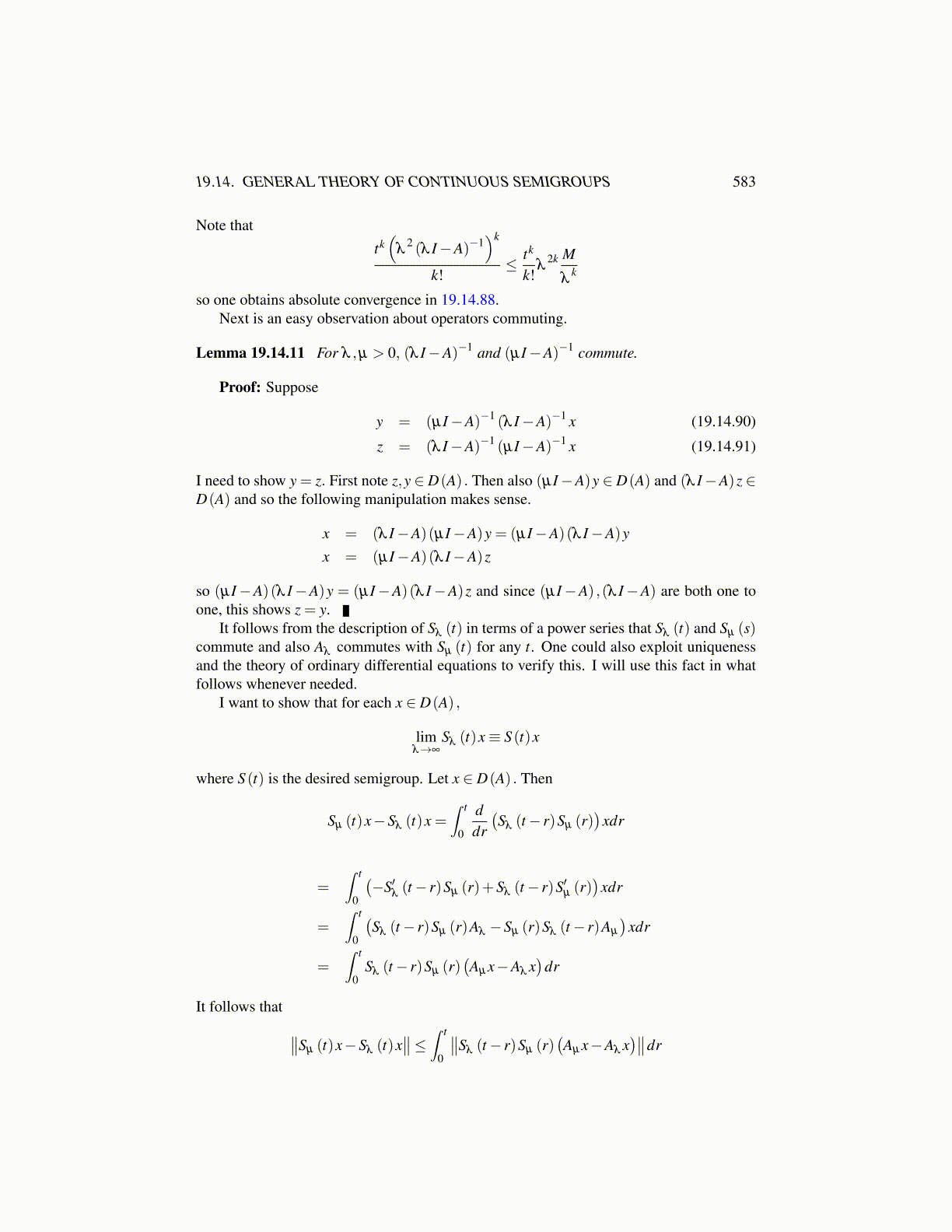
19.14. GENERAL THEORY OF CONTINUOUS SEMIGROUPS 583
Note thattk(
λ2 (λ I−A)−1
)k
k!≤ tk
k!λ
2k M
λk
so one obtains absolute convergence in 19.14.88.Next is an easy observation about operators commuting.
Lemma 19.14.11 For λ ,µ > 0, (λ I−A)−1 and (µI−A)−1 commute.
Proof: Suppose
y = (µI−A)−1 (λ I−A)−1 x (19.14.90)
z = (λ I−A)−1 (µI−A)−1 x (19.14.91)
I need to show y = z. First note z,y ∈D(A) . Then also (µI−A)y ∈D(A) and (λ I−A)z ∈D(A) and so the following manipulation makes sense.
x = (λ I−A)(µI−A)y = (µI−A)(λ I−A)y
x = (µI−A)(λ I−A)z
so (µI−A)(λ I−A)y = (µI−A)(λ I−A)z and since (µI−A) ,(λ I−A) are both one toone, this shows z = y.
It follows from the description of Sλ (t) in terms of a power series that Sλ (t) and Sµ (s)commute and also Aλ commutes with Sµ (t) for any t. One could also exploit uniquenessand the theory of ordinary differential equations to verify this. I will use this fact in whatfollows whenever needed.
I want to show that for each x ∈ D(A) ,
limλ→∞
Sλ (t)x≡ S (t)x
where S (t) is the desired semigroup. Let x ∈ D(A) . Then
Sµ (t)x−Sλ (t)x =∫ t
0
ddr
(Sλ (t− r)Sµ (r)
)xdr
=∫ t
0
(−S′
λ(t− r)Sµ (r)+Sλ (t− r)S′µ (r)
)xdr
=∫ t
0
(Sλ (t− r)Sµ (r)Aλ −Sµ (r)Sλ (t− r)Aµ
)xdr
=∫ t
0Sλ (t− r)Sµ (r)
(Aµ x−Aλ x
)dr
It follows that ∥∥Sµ (t)x−Sλ (t)x∥∥≤ ∫ t
0
∥∥Sλ (t− r)Sµ (r)(Aµ x−Aλ x
)∥∥dr